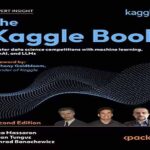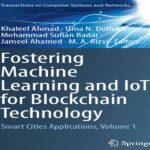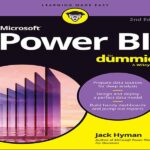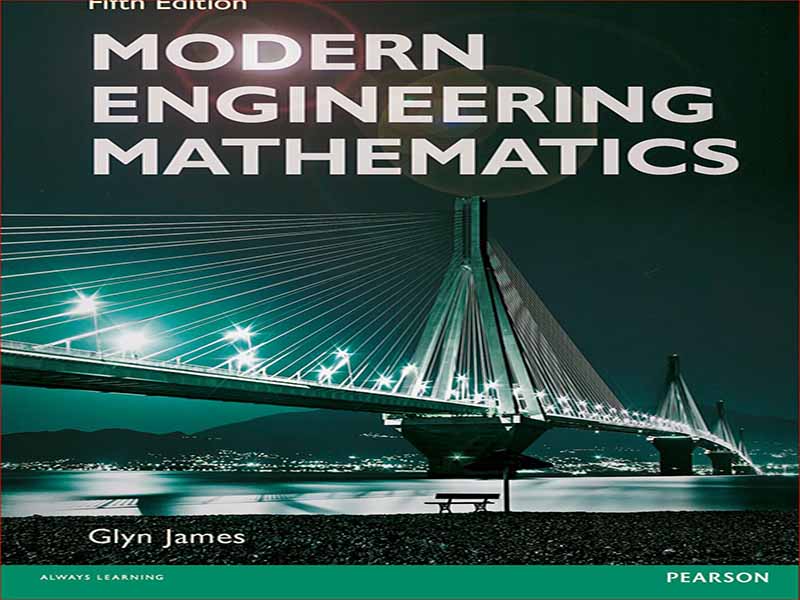- عنوان کتاب: Modern Engineering Mathematics
- نویسنده: Glyn James
- سال انتشار: 2015
- حوزه: ریاضیات مهندسی
- تعداد صفحه: 1153
- زبان اصلی: انگلیسی
- نوع فایل: pdf
- حجم فایل: 14.3 مگابایت
مانند نسخههای قبلی، طیف مطالبی که در این ویرایش پنجم پوشش داده شده است برای دورههای مطالعات هستهای سطح اول در ریاضیات برای دورههای کارشناسی در همه رشتههای مهندسی مناسب در نظر گرفته میشود. در حالی که در درجه اول برای استفاده توسط دانشجویان مهندسی طراحی شده است، اعتقاد بر این است که این کتاب برای دانشجویان علوم فیزیکی و ریاضیات کاربردی نیز بسیار مناسب است. مطالب اضافی مناسب برای مطالعات پایه مقطع کارشناسی سطح دوم، یا احتمالاً مطالعات انتخابی برای برخی رشته های مهندسی، در متن همراه ریاضیات مهندسی مدرن پیشرفته موجود است. هدف تیم نویسنده دستیابی به تعادل بین توسعه درک و تسلط بر تکنیک های حل، با تاکید بر توسعه توانایی دانش آموزان برای استفاده از ریاضیات همراه با درک برای حل مسائل مهندسی است. در نتیجه، این کتاب مجموعهای از دستور العملها و تکنیکهایی نیست که برای آموزش حل تمرینهای معمولی به دانشآموزان طراحی شده باشد، و همچنین سختگیری ریاضی به خاطر خودش معرفی نشده است. برای دستیابی به هدف مورد نظر، متن شامل موارد زیر است:
l نمونه های کار شده
تقریباً 500 نمونه کار شده، که بسیاری از آنها مدلهای ریاضی را در خود جای دادهاند و هم برای ارائه ارتباط و هم برای تقویت نقش ریاضیات در شاخههای مختلف مهندسی طراحی شدهاند. در پاسخ به بازخورد کاربران، نمونههای کار اضافی در این نسخه اصلاح شده گنجانده شده است.
l برنامه های کاربردی
برای ارائه بیشتر استفاده از مدلهای ریاضی در عمل مهندسی، هر فصل شامل بخشهایی در مورد کاربردهای مهندسی است. این بخشها چارچوبی ایدهآل برای تکالیف مطالعه موردی فردی یا گروهی تشکیل میدهند که منجر به یک گزارش کتبی و/یا ارائه شفاهی میشود، در نتیجه به توسعه مهارتهای مدلسازی ریاضی لازم برای آمادهسازی برای تمرینهای مدلسازی بازتر در مراحل بعدی کمک میکند. دوره.
l تمرینات
بخش های تمرینی متعددی در سراسر متن وجود دارد و در پایان هر فصل مجموعه ای جامع از تمرین های مروری وجود دارد. در حالی که بسیاری از مسائل تمرینی برای توسعه مهارتها در تکنیکهای ریاضی طراحی شدهاند، برخی دیگر برای توسعه درک و تشویق یادگیری از طریق انجام طراحی شدهاند، و برخی از آنها ماهیتی باز دارند. این کتاب شامل بیش از 1200 تمرین است و به تمام سوالات پاسخ داده شده است. امید است این تمهید به همراه تعداد زیاد نمونه های کار شده و شیوه ارائه، کتاب را برای مطالعه خصوصی یا جهت دار نیز مناسب سازد. باز هم در پاسخ به بازخورد کاربران، تعداد بخش های تمرین افزایش یافته و سوالات اضافی به بسیاری از بخش ها اضافه شده است.
l روش های عددی
با توجه به استفاده روزافزون از روشهای عددی در عمل مهندسی، که اغلب مکمل استفاده از روشهای تحلیلی در تجزیه و تحلیل و طراحی هستند و در حل مسائل پیچیده مهندسی از اهمیت بالایی برخوردار هستند، توافق گستردهای وجود دارد که آنها باید در برنامه درسی ریاضی ادغام شوند. در نتیجه درمان روش های عددی در کار تحلیلی در سراسر کتاب ادغام شده است.
بیشتر بازخوردهای کاربران به نقش و استفاده از بسته های نرم افزاری، به ویژه بسته های جبر نمادین، در آموزش ریاضیات به دانشجویان مهندسی مربوط می شود. در پاسخ، استفاده از چنین بسته هایی همچنان یکی از ویژگی های قابل توجه این نسخه جدید است. در حالی که می توان از هر بسته نرم افزاری مناسبی استفاده کرد، نویسندگان استفاده از MATLAB و/یا MAPLE را توصیه می کنند و به استفاده از آنها در این متن ادامه داده اند. در کل، با اشاره به دستورات MAPLE مربوطه و تفاوت در نحو برجسته شده، تاکید بر استفاده از MATLAB خواهد بود. دستورات MATLAB/MAPLE به عنوان درج در سراسر متن معرفی و نشان داده شده اند تا بتوان استفاده از آنها را در فرآیندهای آموزش و یادگیری ادغام کرد. اکیداً به دانش آموزان توصیه می شود که از یکی از این بسته ها برای بررسی پاسخ مثال ها و تمرین ها استفاده کنند. تاکید می شود که درج MATLAB/MAPLE به عنوان اولین معرفی بسته به دانش آموزان در نظر گرفته نشده است. پیش بینی می شود که آنها یک دوره مقدماتی را در جای دیگری دریافت کنند و از امکانات عالی “کمک” موجود آگاه شوند. هدف از ترکیب درجها نه تنها بهبود کارایی در استفاده از بستهبندی، بلکه فراهم کردن تسهیلاتی برای کمک به توسعه درک بهتر از ریاضیات مرتبط است.
As with the previous editions, the range of material covered in this fifth edition is regarded as appropriate for a first-level core studies course in mathematics for undergraduate courses in all engineering disciplines. Whilst designed primarily for use by engineering students it is believed that the book is also highly suitable for students of the physical sciences and applied mathematics. Additional material appropriate for second-level undergraduate core studies, or possibly elective studies for some engineering disciplines, is contained in the companion text Advanced Modern Engineering Mathematics. The objective of the authoring team remains that of achieving a balance between the development of understanding and the mastering of solution techniques, with the emphasis being on the development of the student’s ability to use mathematics with understanding to solve engineering problems. Consequently, the book is not a collection of recipes and techniques designed to teach students to solve routine exercises, nor is mathematical rigour introduced for its own sake. To achieve the desired objective the text contains:
l Worked examples
Approximately 500 worked examples, many of which incorporate mathematical models and are designed both to provide relevance and to reinforce the role of mathematics in various branches of engineering. In response to feedback from users, additional worked examples have been incorporated within this revised edition.
l Applications
To provide further exposure to the use of mathematical models in engineering practice, each chapter contains sections on engineering applications. These sections form an ideal framework for individual, or group, case study assignments leading to a written report and /or oral presentation, thereby helping to develop the skills of mathematical modelling necessary to prepare for the more openended modelling exercises at a later stage of the course.
l Exercises
There are numerous exercise sections throughout the text, and at the end of each chapter there is a comprehensive set of review exercises. While many of the exercise problems are designed to develop skills in mathematical techniques, others are designed to develop understanding and to encourage learning by doing, and some are of an open-ended nature. This book contains over 1200 exercises and answers to all the questions are given. It is hoped that this provision, together with the large number of worked examples and style of presentation, also makes the book suitable for private or directed study. Again in response to feedback from users, the frequency of exercises sections has been increased and additional questions have been added to many of the sections.
l Numerical methods
Recognizing the increasing use of numerical methods in engineering practice, which often complement the use of analytical methods in analysis and design and are of ultimate relevance when solving complex engineering problems, there is wide agreement that they should be integrated within the mathematics curriculum. Consequently the treatment of numerical methods is integrated within the analytical work throughout the book.
Much of the feedback from users relates to the role and use of software packages, particularly symbolic algebra packages, in the teaching of mathematics to engineering students. In response, use of such packages continues to be a significant feature of this new edition. Whilst any appropriate software package can be used, the authors recommend the use of MATLAB and/or MAPLE and have continued to adopt their use in this text. Throughout, emphasis will be on the use of MATLAB, with reference made to corresponding MAPLE commands and differences in syntax highlighted. MATLAB/MAPLE commands have been introduced and illustrated, as inserts, throughout the text so that their use can be integrated into the teaching and learning processes. Students are strongly encouraged to use one of these packages to check the answers to the examples and exercises. It is stressed that the MATLAB/MAPLE inserts are not intended to be a first introduction of the package to students; it is anticipated that they will receive an introductory course elsewhere and will be made aware of the excellent ‘help’ facility available. The purpose of incorporating the inserts is not only to improve efficiency in the use of the package but also to provide a facility to help develop a better understanding of the related mathematics.
این کتاب را میتوانید از لینک زیر بصورت رایگان دانلود کنید:
Download: Modern Engineering Mathematics




































نظرات کاربران